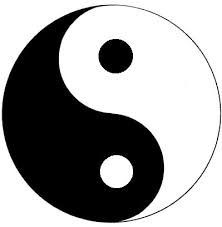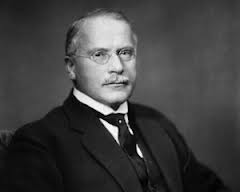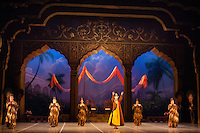 My career as a performer with the Boston Ballet is in the rear-view mirror but the lessons learned from this amazing experience will take months if not years to process. In many ways it completed a circle begun years ago during my yoga days in San Francisco.
My career as a performer with the Boston Ballet is in the rear-view mirror but the lessons learned from this amazing experience will take months if not years to process. In many ways it completed a circle begun years ago during my yoga days in San Francisco.
(The priests and high brahmin have the stage to ourselves for about 10 seconds at the beginning of Act 2. I was cropped out of the picture!)
Iyengar’s approach to hatha yoga with its discipline, dedication to practice and precision of alignment has strong parallels in other realms of the somatic world. Structural integration or ‘Rolfing’ is one that has provided me with many long lasting relationships.
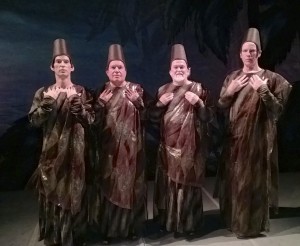 Another, amazingly enough is with ballet. When I was teaching in San Francisco in the 1980’s, Rodney Yee was just ending his dance career with the Oakland Ballet and beginning his yoga teacher training. Around the same time, an ex- dancer from the American Ballet Theater, John Leech, appreciating the clarity of Iyengar’s approach, had begun taking my classes. He was teaching at the San Francisco Ballet school and brought me in to teach a yoga class there. Soon two of the SF Ballet’s principal dancers began coming to my classes, joining several other dancers who were regulars. They were an easy group to teach as they were already deeply embodied and knew how to practice. Because I was living in Oakland at the time, I bought season tickets to the Oakland Ballet and became fascinated with the parallels with yoga.
Another, amazingly enough is with ballet. When I was teaching in San Francisco in the 1980’s, Rodney Yee was just ending his dance career with the Oakland Ballet and beginning his yoga teacher training. Around the same time, an ex- dancer from the American Ballet Theater, John Leech, appreciating the clarity of Iyengar’s approach, had begun taking my classes. He was teaching at the San Francisco Ballet school and brought me in to teach a yoga class there. Soon two of the SF Ballet’s principal dancers began coming to my classes, joining several other dancers who were regulars. They were an easy group to teach as they were already deeply embodied and knew how to practice. Because I was living in Oakland at the time, I bought season tickets to the Oakland Ballet and became fascinated with the parallels with yoga.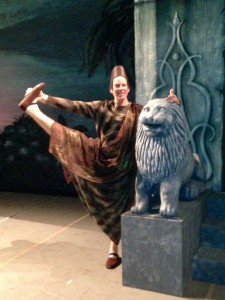
(what the audience never got to see!)
Many years later, about 4 years ago, and now living in Arlington, I received a mailer from the Boston Ballet featuring a special evening ‘preview’ performance with excerpts from several up coming programs. Kate, Sean and I went and I was immediately hooked. The mailer worked! I signed up for a season pass and became a big fan. One of the great surprises was the breath of BB”s repertoire as many modern and cutting edge choreographers were also included. And as I now had lots of experience with movement through my studies with Emilie, Bonnie and Caryn, I was taking this in on a whole new level.
Several months later I receive a call from a old student from San Francisco who I had not heard from in 25 years or so, Jennifer Karius. She was one of the San Francisco Ballet dancers who eventually went on to live and dance in the Netherlands. She kept up her yoga practice and after retirement, became an Iyengar Yoga teacher. She was calling to tell me she was now all psyched to be teaching in the US and wondering why I wasn’t still involved in the Iyengar scene. I told her of my newly rediscovered excitement with the Boston Ballet and how complementary ballet and yoga were. So Jen says “well you’ll have to get in touch with Mikko”. And I say “who?” And she says “Mikko Nissinen, the guy who told me to come to your class back in San Francisco. He is now the Artistic Director of the Boston Ballet.” I go, the other dancer, omg, wow!
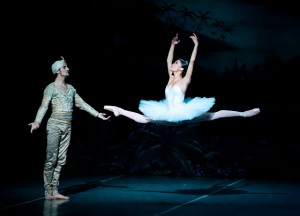 (Lia Cirio as Nikiya, shows how to levitate in ‘hanumanasana’ as Lasha Khozashvili, as Solor, stares in amazement)
(Lia Cirio as Nikiya, shows how to levitate in ‘hanumanasana’ as Lasha Khozashvili, as Solor, stares in amazement)
So I contacted Mikko, went to visit the BB home down on Clarenden St. got the tour, sat in on the company master class, met his assistant Liz Olds, talked yoga and dance, and was invited to watch rehearsals whenever the schedules fit. A year or so later, I ran into Liz Olds at a Boston Ballet performance where there were ‘non-dancers’ participating and asked her how these ‘supernumeraries’ were chosen. She told me she would put my name on the list if I was interested and I said absolutely. All was quiet until this past August when I received an invitation to ‘audition’ for La Bayadere, which would open Boston Ballet’s 50th anniversary season.
A classical ballet from1870’s Russia, La Bayadere is known in the west primarily because of Rudolf Nureyev, who in 1963 presented revitalized version in Paris. Nureyev eventually defected from the Soviet Union and took up residence in Paris. A full performance La Bayadere, produced by Rudolf while he was dying in October of 1992 can be seen on youtube. (I practiced to this version, although the super’s choreography is slightly different.)
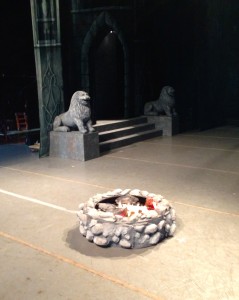 La Bayadere takes place in a forest in India. The bayaderes are the temple dancers, who along with the priests, fakirs and the high Brahmin, are in charge of the temple and the fire ceremony.
La Bayadere takes place in a forest in India. The bayaderes are the temple dancers, who along with the priests, fakirs and the high Brahmin, are in charge of the temple and the fire ceremony.
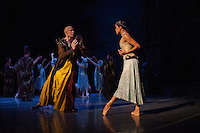 (The priests get to join the bayaderes and the fakirs around the fire pit while the High Brahmin makes his move on Nikiya. This was the high point of our participation. )
(The priests get to join the bayaderes and the fakirs around the fire pit while the High Brahmin makes his move on Nikiya. This was the high point of our participation. )
Solor, a famous hunter has recently saved the life of the head bayadere, Nikiya by killing a dangerous tiger that has been terrorizing the area. They fall in love. But the Rajah has decided that Solor will marry his daughter, Gamzatti. 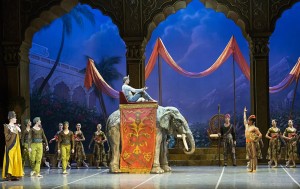 And the High Brahmin is in love (or lust) with Nikiya. To make a long story short, Nikiya is betrayed by everyone and dies a nefarious death at the end of act 2, but returns in act 3 with the ‘shades’ or ghosts, in one of the most famous scenes in all of ballet.
And the High Brahmin is in love (or lust) with Nikiya. To make a long story short, Nikiya is betrayed by everyone and dies a nefarious death at the end of act 2, but returns in act 3 with the ‘shades’ or ghosts, in one of the most famous scenes in all of ballet.
In “the Kingdom of the Shades”, One by one, ballerinas appear from the wings atop an 8 foot high ramp and perform a series of arabesque penchees while slowly descending a ramp, moving totally together, as a single organism, zig-zagging back and forth until all 24 reorganize into a grid and continue to move in synchrony. It is an amazing and demanding feat of focus, integration, relaxation, balance, co-ordination.
Having never participated in anything like this, it was a blast to be back stage, in the wings and out on stage, weaving in and out of these amazing dancers. From the high of opening night to the many ‘oopses’ of live performances, it was non stop fun. The Ballet Orchestra was wonderful and kept me on my toes, as live performances are always different. Just about every dancer in the company was involved and many had multiple roles that changed from night to night. My appreciation of their skill, discipline and dedication was high before, but is off the charts now. Special thanks go to our dedicated teacher Larissa Ponomarenko, who took us amateurs and whipped us into a finely tuned organic whole. Larissa, who recently retired after 18 years with the Boston Ballet, moves like and has the heart of an angel. She was wonderful with us and working with her was certainly one of the hi-lites of the month. My fellow supernumeraries, the priests and guards, spent many an hour, waiting for our call to visit the costumes ladies, plotting how to ‘individualize’ our performances. But in the end, professionalism won out. (We’d all love to be invited back!)
And, as most of you know, while all this was going on, the Red Sox were winning the World Series. The back stage crew had all of the games on which amped up the energy even more. The last of our 14 performances came too quickly, as I was ready for a few more weeks. But BB is on to the Nutcracker where they will put on 41 performances in 5 weeks. Wow. That why they are pro’s and I am not.








